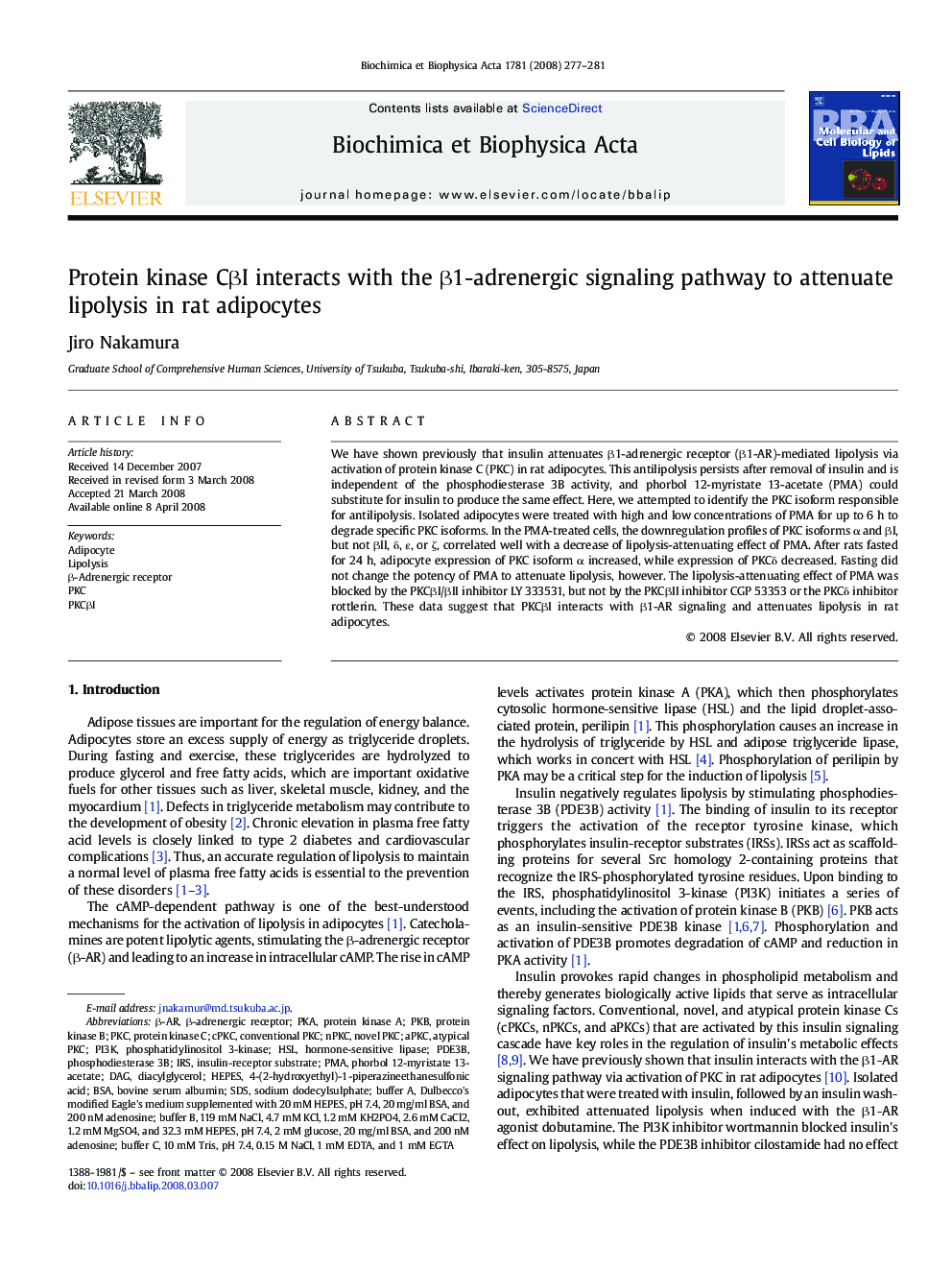| Article ID | Journal | Published Year | Pages | File Type |
|---|---|---|---|---|
| 1950058 | Biochimica et Biophysica Acta (BBA) - Molecular and Cell Biology of Lipids | 2008 | 5 Pages |
Abstract
We have shown previously that insulin attenuates β1-adrenergic receptor (β1-AR)-mediated lipolysis via activation of protein kinase C (PKC) in rat adipocytes. This antilipolysis persists after removal of insulin and is independent of the phosphodiesterase 3B activity, and phorbol 12-myristate 13-acetate (PMA) could substitute for insulin to produce the same effect. Here, we attempted to identify the PKC isoform responsible for antilipolysis. Isolated adipocytes were treated with high and low concentrations of PMA for up to 6 h to degrade specific PKC isoforms. In the PMA-treated cells, the downregulation profiles of PKC isoforms α and βI, but not βII, δ, É, or ζ, correlated well with a decrease of lipolysis-attenuating effect of PMA. After rats fasted for 24 h, adipocyte expression of PKC isoform α increased, while expression of PKCδ decreased. Fasting did not change the potency of PMA to attenuate lipolysis, however. The lipolysis-attenuating effect of PMA was blocked by the PKCβI/βII inhibitor LY 333531, but not by the PKCβII inhibitor CGP 53353 or the PKCδ inhibitor rottlerin. These data suggest that PKCβI interacts with β1-AR signaling and attenuates lipolysis in rat adipocytes.
Keywords
β-ARbuffer Cbuffer Binsulin-receptor substratenPKCconventional PKCPhosphodiesterase 3BNovel PKCcPKCaPKCHSLphorbol 12-myristate 13-acetatePKBPDE3BPKCPI3KSDSHEPESpKaIRS4-(2-hydroxyethyl)-1-piperazineethanesulfonic acidBSAPMAAtypical PKCAdipocytebovine serum albuminbuffer AdiacylglycerolDAGsodium dodecylsulphatePhosphatidylinositol 3-kinasehormone-sensitive lipaseLipolysisprotein kinase Aprotein kinase BProtein kinase Cβ-Adrenergic receptor
Related Topics
Life Sciences
Biochemistry, Genetics and Molecular Biology
Biochemistry
Authors
Jiro Nakamura,
